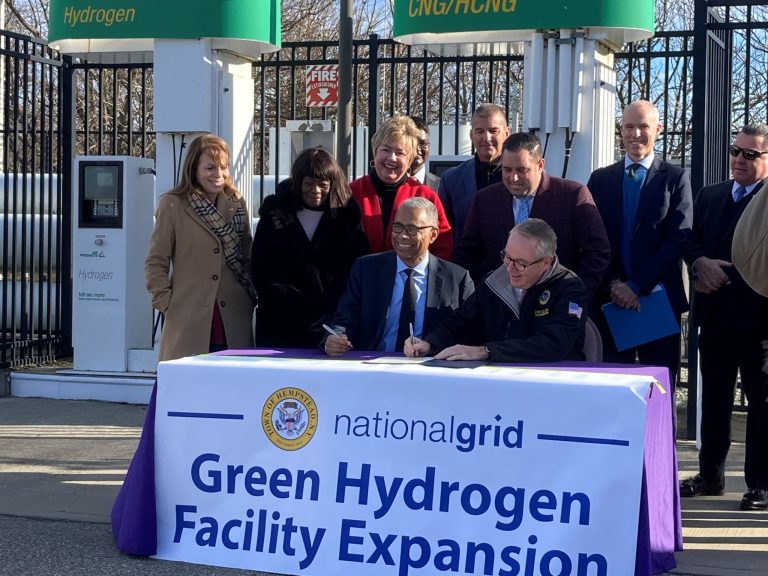
The Town of Hempstead and National Grid announced a joint project that would make the township home to one of the first and largest clean hydrogen projects in the country.
On Dec. 15, officials gathered to announce the expansion of Energy Park’s hydrogen facility in Point Lookout. The HyGrid project will blend hydrogen with natural gas to heat approximately 800 homes in the area and fuel 10 municipal vehicles.
Along with being one the first in the nation, the hydrogen expansion project will become the East Coast’s largest.
Hydrogen blending involves the integration of hydrogen into existing natural gas pipelines, reducing carbon intensities of methane. According to National Grid, blending’s added benefits include zero carbon produced when using renewable power and no additional costs to taxpayers.
Hempstead’s hydrogen fueling station became operational in 2009, the first of its kind on Long Island, providing locally produced hydrogen.
“The Town of Hempstead continues to be a clean energy leader amongst municipalities, as we have demonstrated the use of wind, solar and green hydrogen, among an array of projects, at our Point Lookout Energy Park,” Hempstead Supervisor Don Clavin said. “We are ready to work with National Grid to build on this legacy and thank them for their partnership on this cutting-edge initiative that will deliver zero-carbon energy to America’s largest township for years to come.”
National Grid will combine an adjacent facility with Energy Park in Point Lookout. Much of the equipment is already in place for the partnership, including wind and solar equipment, officials said.
Expanding Energy Park is one of many environmental projects that have taken place in Hempstead. Previous initiatives include a clean-energy shellfish nursery, a self-reliant office that runs on “green energy” and expansion of Hempstead’s fleet of environmentally friendly vehicles.
“This is truly an exciting day for the future of clean energy on Long Island, as this partnership with National Grid will be a model for others across the nation,” Clavin said. “By utilizing our existing renewable power infrastructure and working with National Grid to expand the facility, we will be able to produce zero-carbon hydrogen energy to our residents and advance our ongoing environmental platform.”






